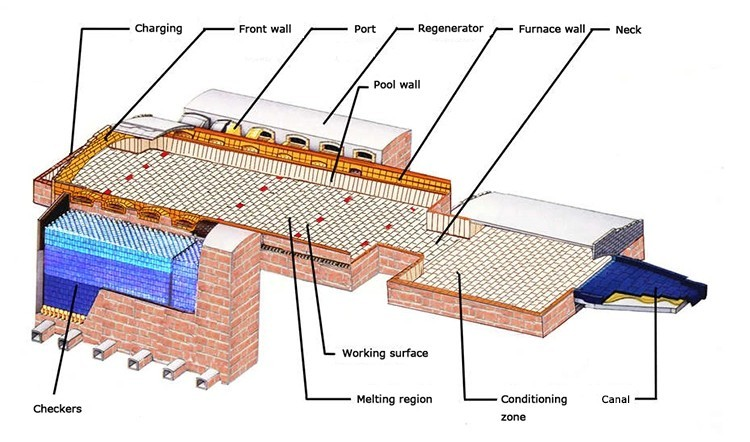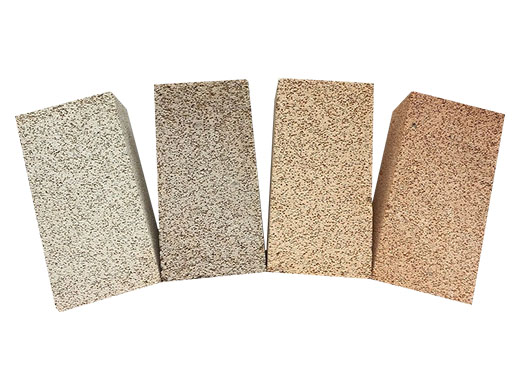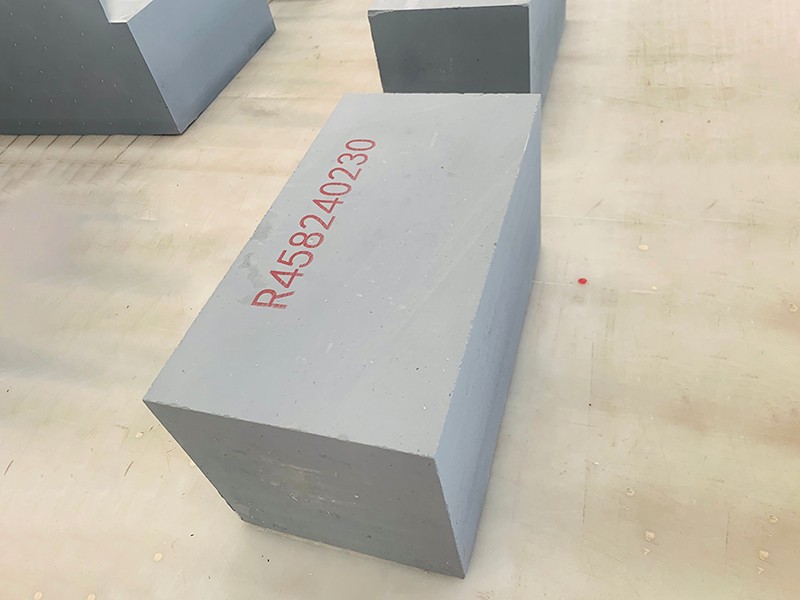News detail
Selection of refractory materials for the top of glass melting furnace
As a key equipment for glass production, the performance of the refractory materials of the top of the glass melting furnace directly affects the service life of the furnace, production efficiency and glass quality. This paper discusses in detail the characteristics of the working environment of the top of the glass melting furnace, analyzes the key performance indicators that need to be considered when selecting refractory materials, such as high temperature resistance, thermal shock resistance, chemical stability, etc., and compares the advantages and disadvantages of several common refractory materials, aiming to provide glass manufacturing companies with a scientific and reasonable basis for selecting refractory materials for the top of the glass melting furnace, and help optimize the glass production process.
The glass industry occupies an important position in the modern manufacturing industry. As the core device for glass melting and forming, the glass melting furnace continuously withstands harsh conditions such as high temperature, chemical erosion and thermal stress shock. Among them, the top of the furnace, as a key part of the furnace, not only has to face the high temperature radiated from the glass liquid, but also has to withstand the scouring and erosion of the fuel combustion products. The quality of its refractory materials plays a decisive role in the stable operation of the entire furnace system. Once the refractory material of the top of the glass furnace is damaged prematurely, it will lead to a series of problems such as increased heat loss, glass liquid pollution, and production interruption, which will bring huge economic losses to the company. Therefore, in-depth research on the selection of refractory materials for the top of the glass furnace is of great practical significance.

Analysis of the working environment of the top of the glass furnace
High temperature environment
When the glass melting furnace is operating normally, the top temperature of the sill can usually reach 1500℃ – 1600℃, and even higher in some local areas. Such high temperatures require refractory materials to have excellent high temperature resistance. Under long-term high temperature, the material structure should remain stable without softening or deformation, so as to maintain the integrity of the top, effectively prevent heat from dissipating outward, and ensure that the heat in the furnace is concentrated on glass melting.
Thermal stress shock
During the start-up and shutdown process of the glass melting furnace and the temperature adjustment stage during the production process, the top temperature will change dramatically. This rapid temperature rise and fall causes large thermal stress inside the refractory material. If the material is not resistant to thermal shock, it is very easy to crack, peel off and other forms of damage, which seriously affects the insulation and protection functions of the top, thereby shortening its service life.
Chemical erosion
During the melting process, glass raw materials will release a variety of corrosive gases, such as alkali vapor and sulfur dioxide. At the same time, products such as carbon dioxide and sulfur oxides produced by fuel combustion will also cause erosion to the top refractory materials. These chemicals react chemically with refractory materials, which may change the physical and chemical properties of the materials, reduce their key performance indicators such as strength and melting point, and accelerate the loss of materials.
Key performance indicators for selecting refractory materials
High temperature resistance
The main indicator for measuring the high temperature resistance of refractory materials is their refractoriness. Generally speaking, the refractoriness of the refractory materials for the top of the glass melting furnace should not be less than 1700℃ to ensure that the material remains solid at the actual working temperature, maintains structural strength, and provides reliable support for the high temperature environment in the furnace. Common high-refractory materials include high-purity corundum, mullite, etc. They have good stability at high temperatures and their crystal structure is not easily destroyed.
Thermal shock resistance
Thermal shock resistance reflects the ability of refractory materials to withstand rapid temperature changes without damage, and is usually characterized by thermal shock stability parameters. For glass furnace sills, materials with good thermal shock stability should be selected, such as cordierite refractory materials, which have a low thermal expansion coefficient and relatively small thermal stress when the temperature changes suddenly. They can effectively avoid cracking caused by thermal shock and ensure the long-term safe use of the sills.
Chemical stability
Refractory materials are required to maintain their own chemical composition and structure relative stability when facing chemical erosion by glass melt and combustion products. For example, zirconium-containing refractory materials have strong resistance to corrosive substances such as alkali metal oxides. Their special crystal structure and chemical bonds can prevent further chemical erosion, thereby extending the service life of refractory materials in harsh chemical environments.
Mechanical strength
The sill refractory materials need to withstand various mechanical loads such as their own gravity, airflow impact in the furnace, and thermal stress. Sufficient mechanical strength at room temperature and high temperature is the key to ensuring that the material does not collapse or break under complex working conditions. High alumina bricks have good mechanical strength due to their high alumina content and are widely used in glass furnace sills. However, with the development of technology, some new composite materials have continuously improved their mechanical strength while taking into account other properties.
Comparison of common refractory materials for glass furnace sills
High alumina bricks
Advantages: high alumina content (generally greater than 60%), excellent high temperature resistance, can adapt to the high temperature conditions of glass melting furnaces; good mechanical strength, can withstand a certain load; wide source of raw materials, relatively low cost, long history of application in domestic glass enterprises, mature technology.

Disadvantages: relatively poor thermal shock resistance, prone to cracks under frequent temperature fluctuations; limited resistance to alkaline substances, with the extension of use time, the performance will gradually decline due to alkali vapor in the glass liquid.
Cordierite refractory material
Advantages: extremely low thermal expansion coefficient, excellent thermal shock stability, can effectively cope with thermal shock during the start-up and shutdown of glass melting furnaces and temperature control; chemical stability is acceptable, with certain resistance to some acidic gases.
Disadvantages: relatively low refractoriness, generally between 1400℃ – 1500℃, used alone in high temperature areas (such as the center of the top of the glass melting furnace) may not meet the requirements; mechanical strength is not outstanding, there is a certain risk when bearing a large load.
Zirconium-containing refractory materials
Advantages: They have strong resistance to corrosive components such as alkali metal oxides, have extremely high chemical stability, and can significantly reduce the erosion of glass liquid and combustion products on the top of the furnace; they have good high temperature resistance, and the refractoriness can reach above 1700℃, which is suitable for environments with high temperature and severe chemical erosion.

Disadvantages: The cost is high. Due to the high price of zirconium raw materials, the manufacturing cost of zirconium-containing refractory materials has been greatly increased, which limits their wide application in some small and medium-sized glass companies; the production process is relatively complex and quality control is difficult.
The selection of refractory materials for the top of the glass melting furnace is a complex process that comprehensively considers many factors. Enterprises need to weigh the advantages and disadvantages of different refractory materials based on their own glass production process characteristics, furnace scale, economic cost budget and other actual conditions. For large modern glass enterprises, which pursue high-quality and long-life production operations, zirconium-containing refractory materials or zirconium-containing composite refractory materials may be a more ideal choice. Although the initial investment is large, from the perspective of long-term benefits, it can effectively reduce the cost and production stoppage losses caused by frequent maintenance and replacement; and for some small and medium-sized glass enterprises, on the premise of meeting basic production needs, they can give priority to cost-effective high-alumina bricks, and extend their service life by optimizing production operations and strengthening the maintenance of the top of the sill. At the same time, some cordierite refractory materials can be used in areas with frequent thermal shock to improve the stability of the overall refractory system. In the future, with the continuous advancement of materials science and technology, new, high-performance and cost-controlled glass furnace top refractory materials are expected to continue to emerge, further promoting the sustainable development of the glass industry.


Send inquiry
Please Leave your message you want to know! We will respond to your inquiry within 24 hours!